Last edit by: IB Advertising
See related guides and technical advice from our community experts:
- Toyota Tacoma How to Install Block Heater<br>Step by step intructions for do-it-yourself repairs.
How to install a block heater (with pics)
#1
How to install a block heater (with pics)
So I looked around the web and couldn't find anything good about installing block heater. I finally installed mine today, so I decided to take some pics.
Here's what I did.
I have a 1999 4runner Ltd 5vze. Don't know if this will be the same with the 2.7L
1. Jack up the front of the truck (at least get the front left tire off the ground which is what I did)
2. Pop off tire
3. This is optional, but I took off the front skid plate to have proper access to the radiator drain plug. It's plastic and I didn't want to strip it.
4. Drain the Rad
5. Take off the mud cover in the wheel well
6. Now you need to pop off your most rear frost plug. I did this using about 14 inches of 3/8 drive extension and a 2lb ball peen. give it a few good blows on one edge of the plug so that it comes out crooked instead of falling into your block.
7. Once you have the plug unseated, get some pliers to yank it out.
8. Now you can just put the plug in and tighten the screw, but I put some aviation silicone on around the edges because I heard that the plugs have a tendency to leak. If you use silicone or gasket maker, obviously let it dry before you start the engine, and make sure it has a high enough temperature rating.
9. Route your wire to your front grill. I used zap straps to secure the wire.
10. Put everything back together.
11. Refill your coolant. The whole system will take about 11 liters, so get 3 or 4 jugs.
Now you can keep your block toasty during those cold winter months
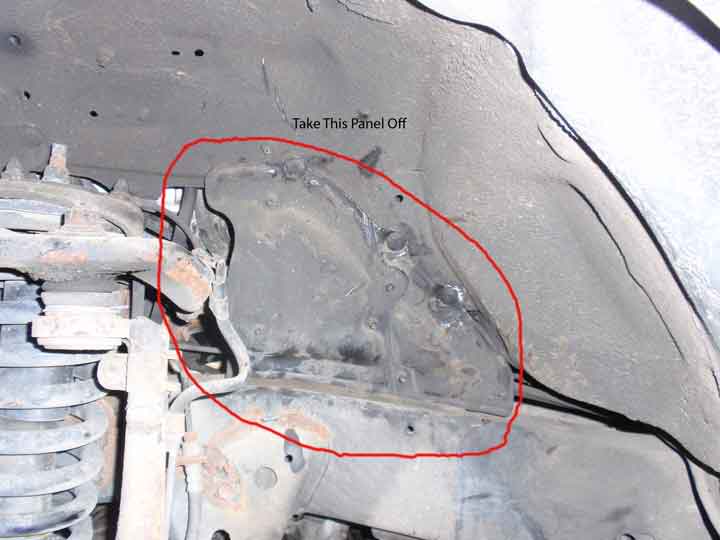
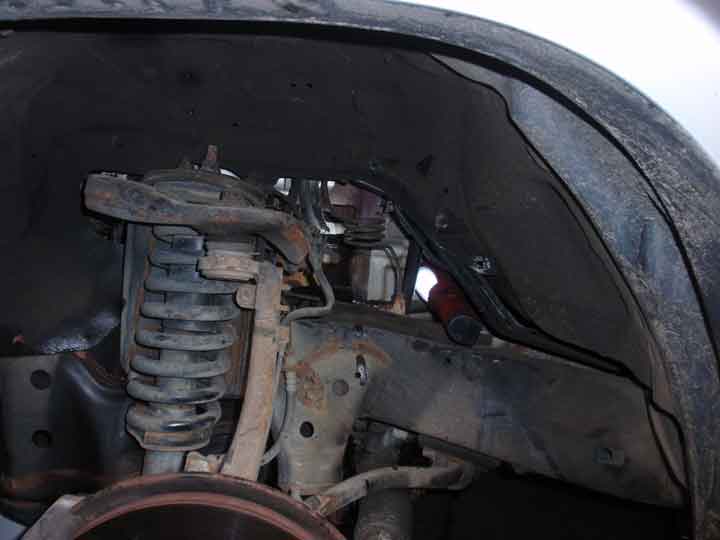
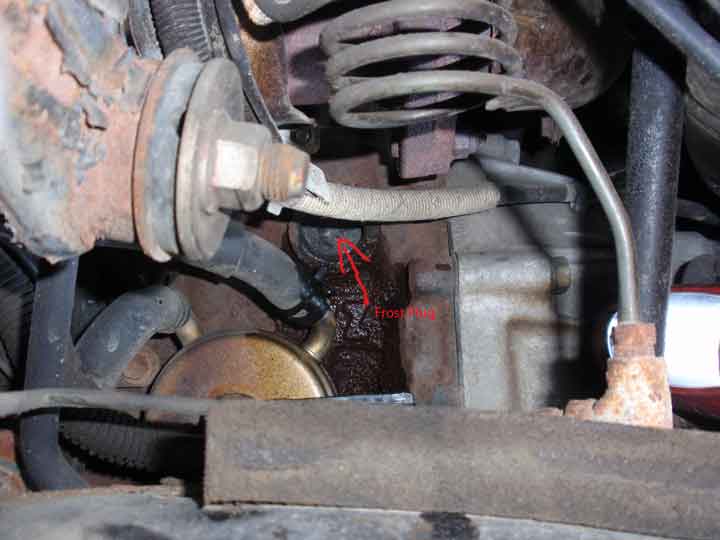
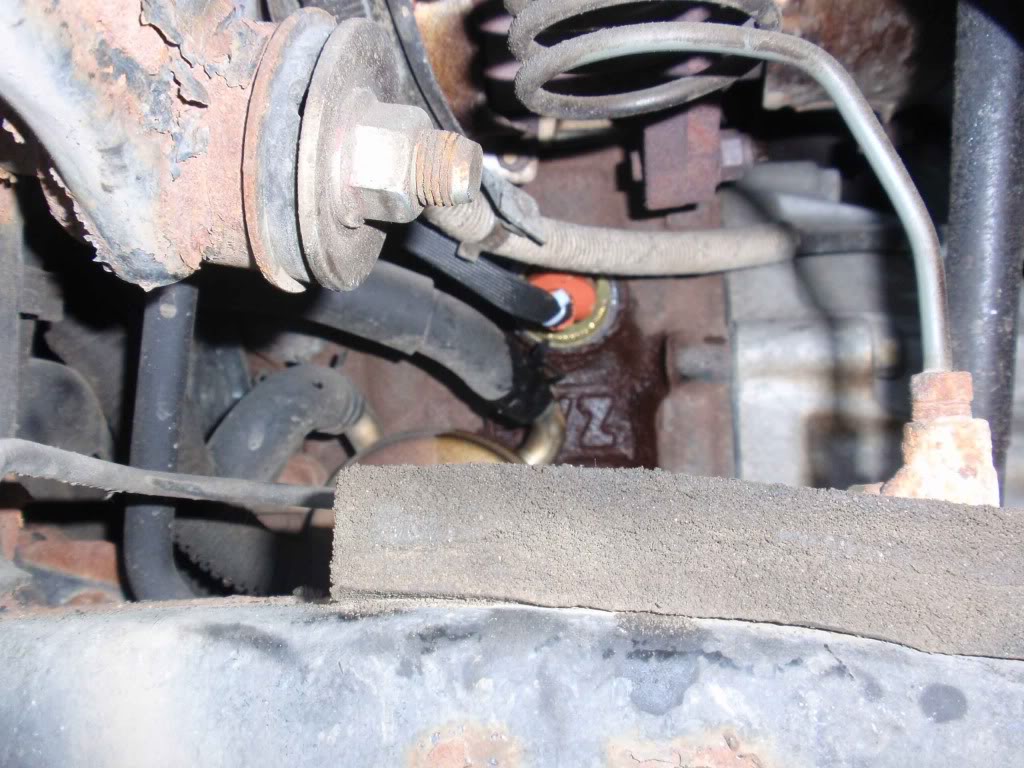
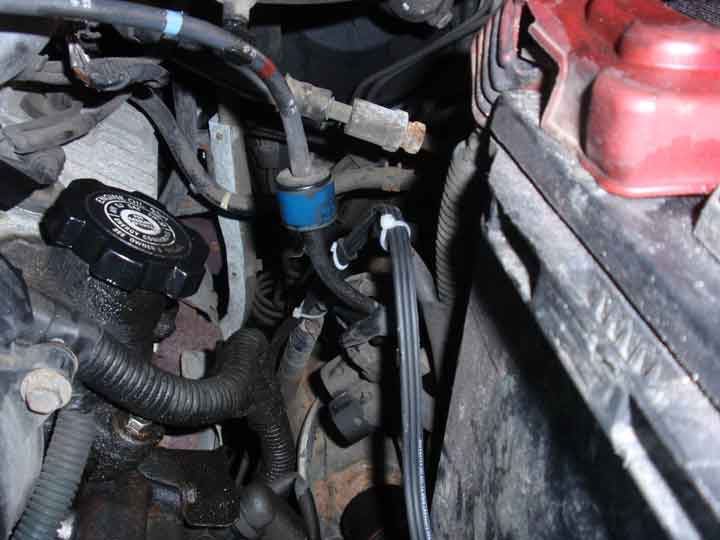
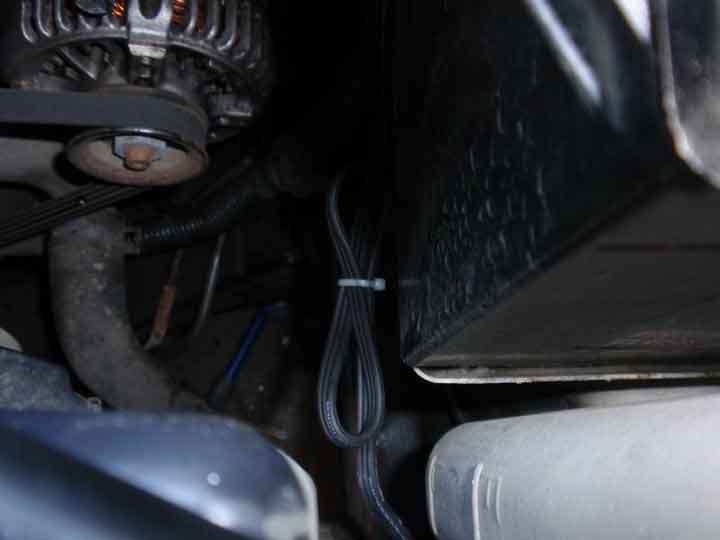
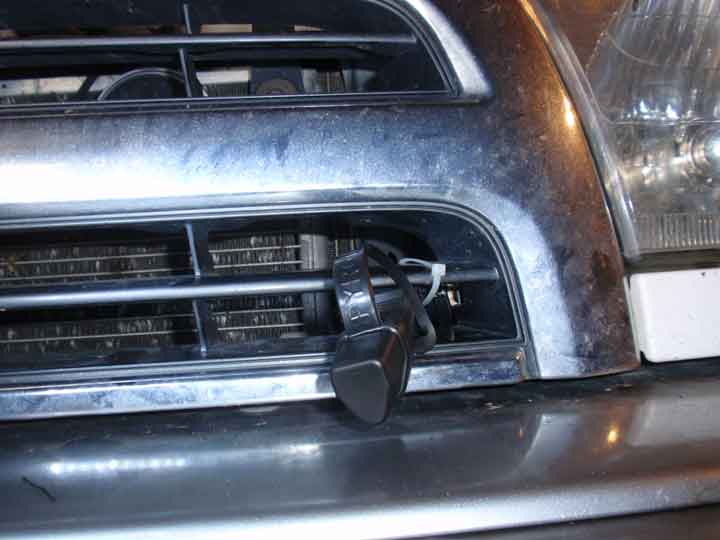
Here's what I did.
I have a 1999 4runner Ltd 5vze. Don't know if this will be the same with the 2.7L
1. Jack up the front of the truck (at least get the front left tire off the ground which is what I did)
2. Pop off tire
3. This is optional, but I took off the front skid plate to have proper access to the radiator drain plug. It's plastic and I didn't want to strip it.
4. Drain the Rad
5. Take off the mud cover in the wheel well
6. Now you need to pop off your most rear frost plug. I did this using about 14 inches of 3/8 drive extension and a 2lb ball peen. give it a few good blows on one edge of the plug so that it comes out crooked instead of falling into your block.
7. Once you have the plug unseated, get some pliers to yank it out.
8. Now you can just put the plug in and tighten the screw, but I put some aviation silicone on around the edges because I heard that the plugs have a tendency to leak. If you use silicone or gasket maker, obviously let it dry before you start the engine, and make sure it has a high enough temperature rating.
9. Route your wire to your front grill. I used zap straps to secure the wire.
10. Put everything back together.
11. Refill your coolant. The whole system will take about 11 liters, so get 3 or 4 jugs.
Now you can keep your block toasty during those cold winter months







Last edited by Canadian Bacon; 10-10-2009 at 03:11 PM.
#3
The blanket won't help start the engine when it's -40 outside. This will keep the whole block warm if you keep it plugged in for 2-3 hours. An oil dipstick heater is another option for cold weather starts, but I haven't looked into that yet. You can also get a battery blanket. Basically you want as little strain on your engine when it starts in those extreme low temperatures. Without the heater, your engine may not even turn at all if it's cold enough.
#4
#5
#6
If you are driving in below freezing, and you can't keep your engine running at operating temp, then yes, the blanket will work because you are restricting ram airflow over your radiator causing it to run warmer, thus keeping your engine temp up.
If however, you had your vehicle sitting outside in -40 weather overnight, your engine will be cold soaked. You oil will by like glue, your anti-freeze will damn well be near frozen, and all the metal parts will have essentially shrunk a few thou. Even if your battery had enough juice to turn the engine over with everything frozen up, you are still putting a lot of strain on your starter and pretty much any other moving part in your engine. Thus, you install a block heater which heats up your engine coolant, and block, and it it like starting your engine on a nice fall day.
Most cars come out of the dealership without a block heater. My 4Runner was originally purchased in Toronto, where the temperature will hit -20 Celsius on the worst of days, whereas in Edmonton, where I live now, -20 is about the average temperature in the winter, so all cars here come standard with a block heater.
So if you live in Southern Canada, or in the U.S., chances are, you won't have a block heater, or need one if you do.
If however, you had your vehicle sitting outside in -40 weather overnight, your engine will be cold soaked. You oil will by like glue, your anti-freeze will damn well be near frozen, and all the metal parts will have essentially shrunk a few thou. Even if your battery had enough juice to turn the engine over with everything frozen up, you are still putting a lot of strain on your starter and pretty much any other moving part in your engine. Thus, you install a block heater which heats up your engine coolant, and block, and it it like starting your engine on a nice fall day.
Most cars come out of the dealership without a block heater. My 4Runner was originally purchased in Toronto, where the temperature will hit -20 Celsius on the worst of days, whereas in Edmonton, where I live now, -20 is about the average temperature in the winter, so all cars here come standard with a block heater.
So if you live in Southern Canada, or in the U.S., chances are, you won't have a block heater, or need one if you do.
Trending Topics
#8
it would engines get hot lol i live in montana and it was like -15 i think and by time i got to school the heater was hot and im no scientist dude but im pretty sure the thermo opened up
#9
Thermost is activated by hot coolant .. coolant gets hot from pistons with 'fire'. That red stuff that comes out when you turn on a lighter ...

sorry i'm watching 'year one' right now ... lots of sarcasm and irony

sorry i'm watching 'year one' right now ... lots of sarcasm and irony
#10
If you are driving in below freezing, and you can't keep your engine running at operating temp, then yes, the blanket will work because you are restricting ram airflow over your radiator causing it to run warmer, thus keeping your engine temp up.
If however, you had your vehicle sitting outside in -40 weather overnight, your engine will be cold soaked. You oil will by like glue, your anti-freeze will damn well be near frozen, and all the metal parts will have essentially shrunk a few thou. Even if your battery had enough juice to turn the engine over with everything frozen up, you are still putting a lot of strain on your starter and pretty much any other moving part in your engine. Thus, you install a block heater which heats up your engine coolant, and block, and it it like starting your engine on a nice fall day.
Most cars come out of the dealership without a block heater. My 4Runner was originally purchased in Toronto, where the temperature will hit -20 Celsius on the worst of days, whereas in Edmonton, where I live now, -20 is about the average temperature in the winter, so all cars here come standard with a block heater.
So if you live in Southern Canada, or in the U.S., chances are, you won't have a block heater, or need one if you do.
If however, you had your vehicle sitting outside in -40 weather overnight, your engine will be cold soaked. You oil will by like glue, your anti-freeze will damn well be near frozen, and all the metal parts will have essentially shrunk a few thou. Even if your battery had enough juice to turn the engine over with everything frozen up, you are still putting a lot of strain on your starter and pretty much any other moving part in your engine. Thus, you install a block heater which heats up your engine coolant, and block, and it it like starting your engine on a nice fall day.
Most cars come out of the dealership without a block heater. My 4Runner was originally purchased in Toronto, where the temperature will hit -20 Celsius on the worst of days, whereas in Edmonton, where I live now, -20 is about the average temperature in the winter, so all cars here come standard with a block heater.
So if you live in Southern Canada, or in the U.S., chances are, you won't have a block heater, or need one if you do.
What he said. I remember one day is the middle of winter, I forgot to plug my truck in. I had to start it when it was exactly -43 degrees Celsius outside. The motor hated it..
#12
If driving on the highway and your engine won't get to temperature, a blanket may be a good idea. Funny though, it is rare to see those things in Canada. They must make things different for cold temperature, because I have never had, or seen any problems with vehicles getting up to operating temperature, even in the coldest of weather. Can anyone explain this one?
#13
A block heater heats the block when the vehicle is not running by plugging into an outlet. There are also battery heater pads/blankets, oil pan heat pads, transmission heater pads and dipstick heaters. For inside, there are plug-in heaters, but most people just turn their car on and let it heat up the normal way, a good 20 minutes. Here in Fairbanks it hits -50F( and colder, had -65F last Jan) for a week or more on end. Its not fun doing anything but staying inside or going snowboarding  . The previously mentioned heaters do nothing when driving. For cold driving, people put pieces of cardboard and other things in front of the radiator to block air flow of onto the radiator to keep coolant temperatures up. If your anti-freeze/water mixture (coolant) is at the correct ratio then it won't thicken up. AFAIK, modern Anti-freeze cant actually freeze solid. it just thickens. The block heater is supposed to help keep the coolant from thickening too much, oil pan heater. battery blanket and transmission heater are all self-explanatory.
. The previously mentioned heaters do nothing when driving. For cold driving, people put pieces of cardboard and other things in front of the radiator to block air flow of onto the radiator to keep coolant temperatures up. If your anti-freeze/water mixture (coolant) is at the correct ratio then it won't thicken up. AFAIK, modern Anti-freeze cant actually freeze solid. it just thickens. The block heater is supposed to help keep the coolant from thickening too much, oil pan heater. battery blanket and transmission heater are all self-explanatory.
 . The previously mentioned heaters do nothing when driving. For cold driving, people put pieces of cardboard and other things in front of the radiator to block air flow of onto the radiator to keep coolant temperatures up. If your anti-freeze/water mixture (coolant) is at the correct ratio then it won't thicken up. AFAIK, modern Anti-freeze cant actually freeze solid. it just thickens. The block heater is supposed to help keep the coolant from thickening too much, oil pan heater. battery blanket and transmission heater are all self-explanatory.
. The previously mentioned heaters do nothing when driving. For cold driving, people put pieces of cardboard and other things in front of the radiator to block air flow of onto the radiator to keep coolant temperatures up. If your anti-freeze/water mixture (coolant) is at the correct ratio then it won't thicken up. AFAIK, modern Anti-freeze cant actually freeze solid. it just thickens. The block heater is supposed to help keep the coolant from thickening too much, oil pan heater. battery blanket and transmission heater are all self-explanatory.
#14
Hence my original question, as to why if someone needs a block heater, one does not also use something to block the radiator.
I'd imagine you'd get the engine much warmer with the plug-in heater, and the engine would cool much slower when off, if the huge hole for the radiator was sealed, as well as the perimeter of the hood, with a weather seal, like the doors. It would create a nice chamber into which hot air will rise, and not escape.
I'd imagine you'd get the engine much warmer with the plug-in heater, and the engine would cool much slower when off, if the huge hole for the radiator was sealed, as well as the perimeter of the hood, with a weather seal, like the doors. It would create a nice chamber into which hot air will rise, and not escape.
#15
I had some cold starts, and no oil pressure. Motor turned over, and LOUD squeel. Not good, I used the oil dip stick heater. Only way I could get it to fire. For a forty dollar investment that will save the life of your motor- I say do it. Oh yeah, I did it... cause thats the WAY I roll! ! haha
#16
Hence my original question, as to why if someone needs a block heater, one does not also use something to block the radiator.
I'd imagine you'd get the engine much warmer with the plug-in heater, and the engine would cool much slower when off, if the huge hole for the radiator was sealed, as well as the perimeter of the hood, with a weather seal, like the doors. It would create a nice chamber into which hot air will rise, and not escape.
I'd imagine you'd get the engine much warmer with the plug-in heater, and the engine would cool much slower when off, if the huge hole for the radiator was sealed, as well as the perimeter of the hood, with a weather seal, like the doors. It would create a nice chamber into which hot air will rise, and not escape.
Out in the colder parts, at least in the city, most places you go will have a plug in for your block heater anyways. I can have my car plugged in at home, drive to work, plug it in there, then go to the store and plug it in there, so you can always keep your engine warm.
If you are still asking why people will want to do this, it is a fairly cheap and simple job, that will make your life a lot easier in the end, and save your engine. You will also get warm air in your cabin a bit quicker as well.
Total cost for the job is $46 for the OEM heater (that's what I paid at my local Toyota dealer) then about another $20-30 in coolant. You may also want to buy an extension chord to reach the outlets. In terms of time, it shouldn't really take more than 1 hour. In my opinion, I think it is well worth the effort.
#17
in minn. and the u.p. most would simply use cardboard as is discussed here. if you want you could simply put in a hotter thermostat every fall, and go back to more stock come spring. the canucks are probably running 10-15F higher thermostats than we use stock.
once the thermostat opens and the rad fluid moves, it chills very quickly, so you want hotter temp fluid before the flow begins, it's easier to maintain warmth in extremely cold temps.
we'd basically run a winter thermostat and pull it entirely during the summer, no real need for one. course that was a long, long time ago and with big blocks.
once the thermostat opens and the rad fluid moves, it chills very quickly, so you want hotter temp fluid before the flow begins, it's easier to maintain warmth in extremely cold temps.
we'd basically run a winter thermostat and pull it entirely during the summer, no real need for one. course that was a long, long time ago and with big blocks.
#18
in minn. and the u.p. most would simply use cardboard as is discussed here. if you want you could simply put in a hotter thermostat every fall, and go back to more stock come spring. the canucks are probably running 10-15F higher thermostats than we use stock.
once the thermostat opens and the rad fluid moves, it chills very quickly, so you want hotter temp fluid before the flow begins, it's easier to maintain warmth in extremely cold temps.
we'd basically run a winter thermostat and pull it entirely during the summer, no real need for one. course that was a long, long time ago and with big blocks.
once the thermostat opens and the rad fluid moves, it chills very quickly, so you want hotter temp fluid before the flow begins, it's easier to maintain warmth in extremely cold temps.
we'd basically run a winter thermostat and pull it entirely during the summer, no real need for one. course that was a long, long time ago and with big blocks.
#19
I do see some advantages to the block heater maintaining a consistant temp ..However, Synthetic oil will flow at -45 to -50 F. If one uses synthetic oil a block heater is not needed as much like w/ conventional oil. Regardless I do agree that a block heater is still a smart move as "cold starts" are not the healthiest thing for any engine...synthetic oil or not.
Last edited by icerunner; 11-01-2009 at 07:03 AM.
#20
I uses synthetic oil with the synthetic filter and synthetic lucas. She'll start, but if you want your engine to keep on going, you have to treat her well. I only have 203 000 Km, and I want to get at least 500k. That is another 10-15 years of driving.












